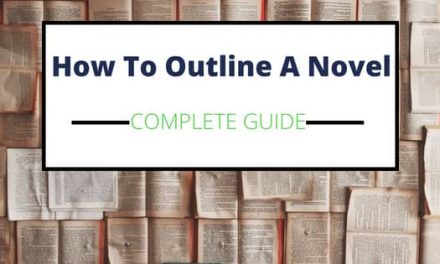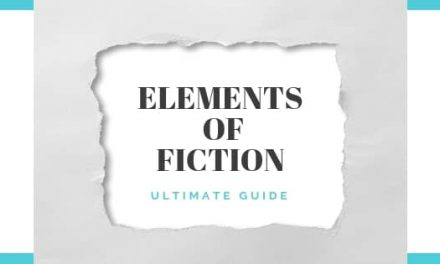What Is A Scene In Literature?
Having been in numerous creative writing classes and workshops, I’ve heard many writers being critiqued on scenes that professors or peers find incomplete or “unnecessary”. Fixing these issues may be an immensely difficult task if you were never taught (a) what a scene is, or (b) what makes a scene necessary.
So, what is a scene in literature?
Scenes are units of chapters in which characters are exchanging dialogue or performing an action. Each scene has its own beginning, middle, and end.
You may read that definition and think, “Ok. But how do I know if I’ve written a good scene?” There is definitely more to writing a good scene than knowing the definition of one, so read on if you’re looking for some insight.
Key elements to a scene
Many writers refer to scenes as “mini short stories”, and I think that’s a great way of going about writing them. You want your scenes to have a beginning, middle, and end, which means they must also have their own conflict and resolution. These conflicts may be big or small, but the point is that they’re there.
You also want these conflicts to directly relate to your main plot or subplot(s) since they’d otherwise be irrelevant to your novel as a whole.
Other key elements that should be included in your scene:
1. Setting
Each and every one of your book’s scenes should have a setting that is clear and descriptive. Is the character in their room? At a park? Is it daytime or nighttime? Without the establishment of setting, characters will feel as though they are floating, and readers may get lost as a result.
2. Characters
A scene isn’t a scene without characters. No one wants to read an entire “scene” that’s solely a description of the setting. A great alternative is to have your character interacting with the setting in some way.
3. Dialogue
It’s very easy to write a scene with little to no dialogue. Sometimes we get caught up in description or internal dialogue. This isn’t necessarily a bad thing all the time, but it’s important to keep in mind that readers typically enjoy the dialogue between characters. If one scene contains two characters giving each other the silent treatment (totally okay), consider using your next one to break that silence, or to have one character talking about the fight with someone else.
4. Action
Your characters have to be doing something. Remember that “action” doesn’t always refer to fistfights and car chases. Your action can come from your character doing something mundane such as attending yoga class or doing the dishes.
Note: Actions are only boring if you write them that way!
Scenes need to push your story forward
A quick way to determine whether or not a scene you’re writing or have written is necessary is to ask yourself this:
“Does this push my story forward?”
This takes us back to my note on conflict and resolution. A story is essentially a series of cause-and-effect scenarios, so if the scene you’ve written doesn’t include external or internal conflict that your character decides to act on, it’s most likely an unnecessary scene. Your scene’s resolution will come from your character(s) deciding what that resolution is, so each scene should bleed into the next in a way that is seamless.
Keep in mind that the resolution doesn’t always come from your main character, so don’t think they don’t need to be the one always deciding what happens next. The conflict may not even originate as the main character’s but affects them in some way that makes it theirs. In this case, someone else’s problem creates conflict for your main character.
Here’s an example: The town bakery burnt all their cakes today. We don’t really care about this unless…your main character needs a cake!
Let’s look at this as a scene:
Your character promised they’d pick up a cake for their estranged parents’ anniversary dinner. Their estranged siblings are counting on them.
When they find out the bakery has had bad batches all day, your main character has a problem on their hands (the conflict). And whereas they don’t need to personally help the bakers bake new cakes to fix their problem, they can decide to go to a different bakery to solve their own (the resolution).
*My point: Don’t write a scene about the mediocre bakery in town if your character has no relation to it. It’s just a useless detail at that point.
What would the next scene be?
Having another scene that takes place in a different bakery might feel repetitive, so how about this?
Your character is in a panic as they rush to the party. They’re late now, since the new bakery was really far away. The family gives your character odd looks as he enters. What follows is an awkward family dinner, but the cherry on top is this: your character was only able to find a dinky Sesame Street themed birthday cake at the new bakery, and when it’s revealed to the family, boy does he get stares. He apologizes and explains himself, silently vowing to make up for the mistake.
The conflict: There’s the external conflict of being late to the party, getting a bad cake, but the objectively more interesting conflict is the main character feeling like a screw-up. This character wants to do right by his family and give a good impression, which has now been compromised.
The resolution: The character attempts to resolve the conflict by explaining himself and saying sorry, but the key to the resolution is his silent vow to do better. This indicates that in the next scene, he’s going to be attempting to make up for his behavior in some way.
when should you transition scenes?
If the “mini short story” comparison doesn’t completely work for you, here are four things that most often call for a new scene:
- A change in point of view
- A change in time
- A change in setting
- A change in task
Believe it or not, most writers, including you and me, have a natural instinct when it comes to knowing where a scene begins and ends. We get this from the number of stories we take in, whether it be a book, movie, or other forms of storytelling. By digesting this content, we train our brains to subconsciously recognize resolution when it occurs.
If you feel like the scene is over, it most likely is.
how many scenes per chapter?
This is a tricky question, because the answer varies from author to author and story to story.
Sometimes, chapters only consist of one scene. This is often when a scene is longer or contains something monumental to your storyline. Letting these scenes stand as their own chapters may allow your reader to digest them in the best way.
Think of chapter breaks as a moment to let your reader step back and breathe. If you have multiple scenes that are closely linked together, there might not be a need to separate them by chapter. An exception to this is when something big happens, like a character’s death, for example. If your character witnesses their best friend getting stabbed in battle, what comes next may be saved for the next chapter.
Not only does this build anticipation, but it also allows the reader that moment to assess what’s happening.
What to avoid when writing scenes
When writing scenes, you want to avoid doing the following things:
Letting your character lack agency: Character agency is your character’s willingness to act on the problems at hand. It’s okay to have an unsure or reluctant character, but they should inevitably end up taking some sort of action.
Writing habitual day-to-day tasks: As I said, tasks are only boring if you write them that way. We don’t need a scene in which your character washes dishes unless something happens to make that dish-washing session different from other typical ones.
For example: Your character realizes halfway through that their roommate never does the washing. It’s the final straw. They’re moving out.
Writing sole exposition: You want your reader to be in the present moment with your main character. Exposition isn’t frowned upon, but it shouldn’t take up the majority of a scene. This is what we would call “info-dumping”.
Having no conflict: Whether the conflict is external or internal, it needs to be there.










